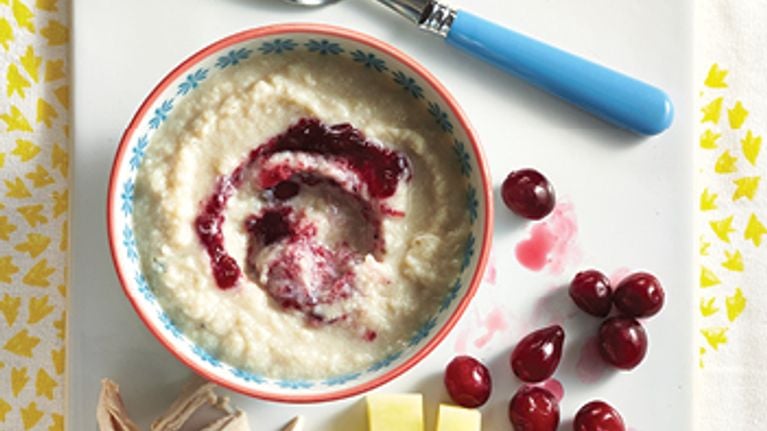Pureeing turkey can transform it into a smooth, nutritious ingredient that can be used in a variety of dishes. Whether you want to make homemade baby food, soft food for the elderly or simply want to add pureed turkey to soups stews or casseroles, properly pureeing turkey is a handy culinary skill.
In this detailed guide, I’ll walk you through everything you need to know to puree turkey at home, from choosing the right turkey to the best pureeing techniques and recipes By the end, you’ll be a pro at making silky-smooth turkey puree.
Choosing the Right Turkey
The first step is selecting high-quality turkey to puree. Here are some tips:
-
Opt for ground turkey or turkey pieces without skin or bones. Ground or boneless turkey will puree to a smoother consistency than turkey with skin and bones.
-
Use breast or thigh meat. Both white and dark meat work well, though white breast meat has a milder flavor.
-
Buy fresh, raw turkey rather than pre-cooked. This allows you to control the cooking process.
-
Choose organic and antibiotic-free if possible for the healthiest puree.
-
Make sure the turkey isn’t expired. Check package dates and use turkey within a few days of purchasing.
Once you have fresh, high-quality ground or boneless turkey, you’re ready to start cooking.
Cooking the Turkey
Properly cooking the turkey before pureeing ensures food safety and yields tender, flavorful meat. Here’s how to do it:
-
Cook ground turkey in a skillet over medium heat, breaking it up until no longer pink.
-
For boneless turkey pieces, simmer in broth until tender and cooked through.
-
Make sure turkey reaches an internal temperature of 165°F. Use a meat thermometer to verify doneness.
-
Allow cooked turkey to cool slightly before pureeing so it doesn’t overheat the blender or processor.
Cooking with a bit of liquid, like broth, keeps the turkey moist and helps thin the puree later on. Cook thoroughly to avoid bacteria that could make babies or those with compromised immune systems sick.
Pureeing the Turkey
Pureeing is what transforms the cooked turkey into a smooth, spoonable texture. Follow these tips:
-
Use a high-powered blender or food processor for the smoothest puree. Avoid blenders with dull blades.
-
Work in batches for easier pureeing. Don’t overfill the blender or bowl.
-
Add liquid while pureeing – breast milk, formula, broth, or water. Start with just a tablespoon or two.
-
Puree on high speed until completely smooth. Scrape down the sides as needed.
-
Strain for an extra-smooth puree if desired. Use a fine mesh strainer to catch any remaining bits.
-
Thin with more liquid if the puree seems too thick. Aim for a thick yogurt-like consistency.
The key is gradually adding liquid to achieve a smooth, pudding-like texture suitable for babies or the elderly. For soups and stews, a thicker puree may work better.
Flavoring and Storing Turkey Puree
A basic turkey puree needs a flavor boost. Here are some ideas:
-
Combine with cooked, pureed vegetables like carrots, sweet potatoes or peas.
-
Stir in herbs and spices: rosemary, sage, thyme, cumin or garlic powder.
-
Mix in fruit purees for sweetness – apples, pears, apricots.
-
Whisk in broth or gravy for more savory flavor.
For storage:
-
Refrigerate puree for 2-3 days.
-
Freeze in ice cube trays for easy, single-serve portions.
-
Store frozen cubes in bags for up to 3 months.
-
Thaw cubes in the fridge or microwave before serving.
Proper storage prevents waste and contamination of your homemade turkey puree.
Recipes Using Turkey Puree
Once you’ve pureed turkey, you can use it in all kinds of dishes:
Turkey Vegetable Soup: Saute veggies in oil. Add broth and turkey puree. Simmer until tender.
Turkey Rice Casserole: Combine cooked rice, turkey puree, shredded cheese and bake.
Turkey Apple Sauce: Blend together turkey puree, cooked apples, cinnamon and nutmeg.
Turkey Meatballs: Mix ground turkey with pureed turkey. Form into balls and bake or simmer in sauce.
Turkey Spread: Puree turkey with cream cheese and herbs for a dip or sandwich spread.
Turkey Rice Bowl: Layer turkey puree, rice, roasted veggies and avocado.
Let your creativity run wild! Turkey puree adds nutrition, flavor and creaminess to many recipes.
FAQs About Turkey Puree
Here are answers to some common turkey pureeing questions:
Can I use a blender instead of food processor? Yes, but you may need to add more liquid to get it smooth.
Should I use white or dark turkey meat? Both work! White breast is milder flavored while dark thigh meat is richer.
How long does it last in the fridge or freezer? 3 days in the fridge, 3 months in the freezer.
Can I puree raw turkey? No! Always cook poultry thoroughly to 165°F first.
Is turkey puree good for babies? Yes, it provides protein, iron and other nutrients. Follow pediatrician guidelines on introducing solids.
What consistency should the puree be? Smooth and thin enough to drizzle off a spoon. Add liquid until it’s like thick yogurt.
Conclusion
With the proper techniques, you can easily whip up smooth, nutritious turkey puree at home. Preparation is simple – choose quality turkey, cook thoroughly, puree with liquid to the desired consistency and flavor how you like. Incorporate turkey puree into soups, casseroles, dips, baby food and more for a quick protein and nutrient boost. This versatile basic is worth mastering for everyday cooking and specialty diets.

Turkey & green beans puree: a Thanksgiving baby recipe
Prep time:
Cooking time:

